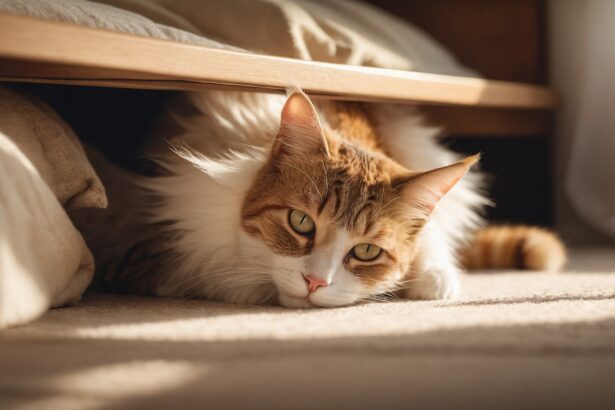Hello, fellow cat-obsessed souls. If you’re curious about the most talkative blue-eyed shadow you’ll ever meet, you’re in the right place. This is your gentle, no-fuss guide to the Siamese cat: a sleek companion with a velvet voice, a dazzling gaze and a very real talent for stealing hearts (and warm spots on the sofa!).
Where the Siamese comes from
Born in the ancient kingdom of Siam (modern-day Thailand), the Siamese cat was once a treasured temple companion. Their distinctive look and graceful presence made them favorites among nobility and storytellers alike.
As travel and trade spread across continents, so did the fame of this elegant cat. Today, the Siamese is adored worldwide for a personality that’s equal parts loyal, playful and delightfully chatty. Curious to compare them with other felines? Browse our cat breed guide for a wider tour.
Their signature look (and why kittens start out white)
That striking color contrast is called “points” — darker ears, face, paws and tail against a lighter body. It’s not just pretty; it’s science. A temperature-sensitive enzyme darkens the cooler parts of the body, which is why Siamese kittens are born almost white and “develop” their points as they grow. Magical? A little.
Classic color points include:
- Seal point: deep brown points with a warm fawn body
- Blue point: slate-gray points with a cool-toned body
- Chocolate point: milk-chocolate points with an ivory body
- Lilac point: frosty gray points with a pinkish tone
Personality: the velvet-voiced best friend
Siamese are intensely social and smart. They enjoy conversation, follow you from room to room and love being part of your routine. Give them puzzles, short training sessions and playtime bursts — they thrive on connection and challenge.
If you’ve ever wondered why she “answers” you, it’s because this breed is famously vocal. Learn to decode those nighttime serenades with our guide to understand your cat’s meows.
Daily care made easy
Nutrition and hydration
Choose a balanced, protein-forward diet and keep fresh water available in more than one spot. Slim, athletic bodies feel best at a healthy weight — portion control plus active play is your secret duo. For basics and smart habits, see our tips on feeding your cat.
Coat, nails and teeth
- Coat: Their short, fine fur benefits from a weekly soft brush to reduce shedding and boost shine.
- Nails: Trim every 2–3 weeks; add sturdy scratch posts in several rooms to protect your furniture.
- Teeth: Dental care matters. Try gentle brushing or dental treats recommended by your vet.
Litter box comfort
Choose a roomy, low-dust litter in a quiet location. If she’s talkative about her box, she might be asking for a bigger space, better texture or cleaner routine. Our guide to choosing the best litter can help you dial it in.
Practical tip
Create a “voice-and-treat” moment: when your Siamese meows at a reasonable volume, say a cue like “soft” and drop a tiny treat by your foot. With repetition, many Siamese lower the volume to earn their reward — it’s positive, gentle and surprisingly effective.
Common mistake to avoid
Don’t rely on tiny, covered litter boxes. Large, open boxes are usually more comfortable and less smelly. Covered boxes can trap odors and some cats find them stressful, which can lead to accidents or vocal protests.
Enrichment they’ll adore
- Interactive play: 2–3 short sessions daily with wand toys or fast-moving chasers.
- Puzzle feeders: Rotate designs weekly to keep that sharp mind busy.
- Vertical spaces: Cat trees or shelves for birdwatching bliss.
- Clicker training: Sit, paw, spin — yes, the Siamese loves a mini challenge. Here’s how to train your cat kindly.
Fun fact
Some Siamese play fetch — and bring the toy back like it’s a job. Try lightweight crinkle balls to spark the instinct.
Health and vet care
Schedule regular checkups, keep vaccines current and ask your vet about dental care and weight monitoring. As with many purebred cats, responsible breeding and routine screenings help reduce risks — always request health information if you’re adopting from a cattery.
If your Siamese seems extra chatty at night, bored or anxious, enrichment plus gentle training can help. Our complete guide to understanding meows offers simple steps for calmer evenings.
Living happily together
- With kids: Teach gentle handling and give your cat an elevated “retreat” for breaks.
- With other pets: Slow introductions work wonders; scent swaps first, then short, supervised meetings.
- Home setup: Perches by sunny windows, quiet nap spots and a consistent routine make sensitive souls feel safe.
New family member on the way? Follow best practices when you introduce a new kitten to keep harmony intact.
Choosing your Siamese
Adopt from a shelter or a responsible breeder who prioritizes health, temperament and socialization. Ask about early handling, diet and medical history. If going the breeder route, here’s what to know about choosing a reputable cattery.
One last cuddle and we’re done
Elegant, affectionate and wonderfully expressive, the Siamese is more than a pretty face — she’s a true companion who wants to share your life, not just your couch. Set up the right routine, offer brain games and celebrate that delightful chatter. You’ll never feel alone in the kitchen again.
FAQ
- Are Siamese cats good with children?
Yes, when kids learn gentle handling and respect nap time. Provide high perches and escape routes so your cat can take a break when needed.
- Do Siamese cats shed a lot?
They shed moderately. A quick weekly brush keeps loose hair down and makes that silky coat shine.
- How long do Siamese cats live?
With good care and regular vet visits, many enjoy long lives, often into their mid to late teens.
- Why are Siamese cats so vocal?
It’s part of their social nature. They use sound to connect, request and comment on life. Training and enrichment help channel the chatter positively.





